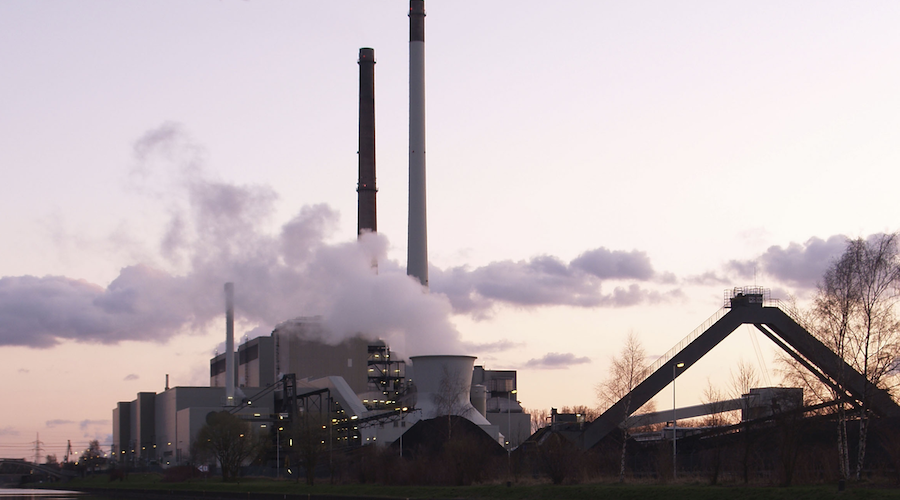Staff Writer | January 5, 2023

Coal-fired power plant in Germany. (Reference image by Arnold Paul, Wikimedia Commons.)
A group of scientists has come up with a machine-learning solution for forecasting amine emissions from carbon-capture plants using experimental data from a stress test at an actual plant in Germany.

In a paper published in the journal Science Advances, the researchers explain that amines are compounds used in the chemical processes of carbon-capture plants and natural gas processing and refining plants. Amines are also used in certain pharmaceuticals, epoxy resins, and dyes.
The problem is that amines could also be potentially harmful to the environment as well as a health hazard, making it essential to mitigate their impact. This requires accurate monitoring and predicting of a plant’s amine emissions, which has proven to be no easy feat since carbon-capture plants are complex and differ from one another.
This is where the new development comes in.
Tested in Niederhauẞen, on one of the largest coal-fired power plants in Germany, the solution was used for a full year to monitor a slipstream that is sent from the power station into a carbon capture pilot plant.
Stress test
The scientists created a stress test to study amine emissions under different process conditions. “We developed an experimental campaign to understand how and when amine emissions would be generated. But some of our experiments also caused interventions of the plant’s operators to ensure the plant was operating safely,” Susana Garcia, co-author of the study, said in a media statement.
These interventions led to the question of how to interpret the data. Are the amine emissions the result of the stress test itself, or have the interventions of the operators indirectly affected the emissions? This was further complicated by a general lack of understanding of the mechanisms behind amine emissions.
“In short, we had an expensive and successful campaign that showed that amine emissions can be a problem, but no tools to further analyze the data,” study co-author Berend Smit said. “When Susana Garcia mentioned this to me, it sounded indeed like an impossible problem to solve. But she also mentioned that they measured everything every five minutes, collecting many data.”
Looking for patterns
With the help of PhD student Kevin Maik Jablonka, the group developed a machine-learning approach that turned the amine emissions puzzle into a pattern-recognition problem.
“We wanted to know what the emissions would be if we did not have the stress test but only the operators’ interventions,” Smit explained. “This is a similar issue as we can have in finance; for example, if you want to evaluate the effect of changes in the tax code, you would like to disentangle the effect of the tax code from, say, interventions caused by the crisis in Ukraine.”
In the next step, Jablonka used powerful machine learning to predict future amine emissions from the plant’s data.
With this model, the team was able to predict the emissions caused by the interventions of the operators and then disentangle them from those induced by the stress test. They were also able to use the model to run all kinds of scenarios for reducing these emissions.
The conclusion of this work was described as “surprising”. As it turned out, the pilot plant had been designed for pure amine, but the measuring experiments were carried out on a mixture of two amines: 2-amino-2-methyl-1-propanol and piperazine. The scientists found out that those two amines respond in opposite ways: reducing the emission of one increases the emissions of the other.
“I am very enthusiastic about the potential impact of this work; it is a completely new way of looking at a complex chemical process,” Smit said. “This type of forecasting is not something one can do with any of the conventional approaches, so it may change the way we operate chemical plants.”
No comments:
Post a Comment